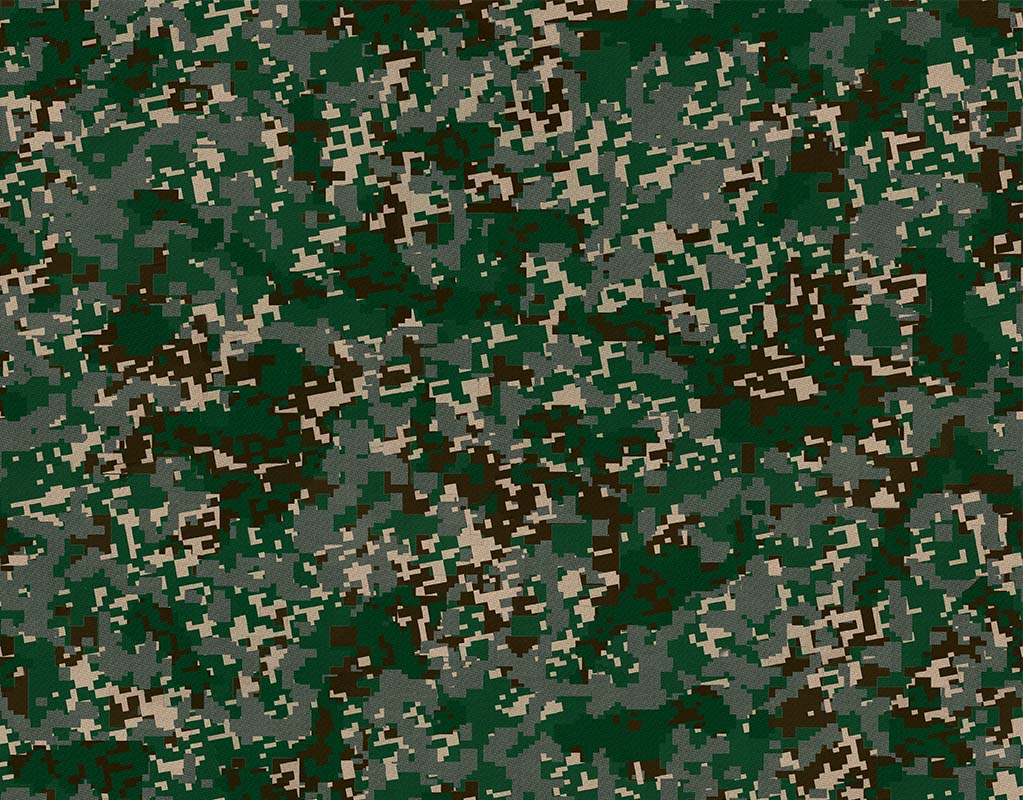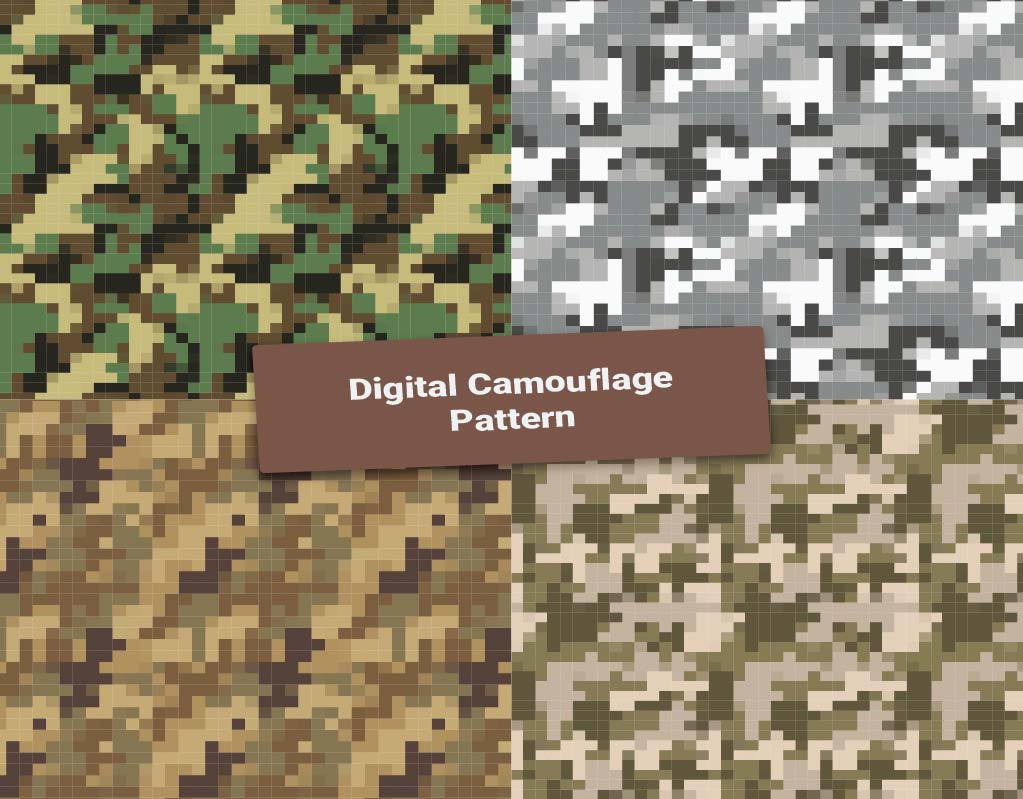Digital Camouflage Pixelated Design | Military Multi-Scale Patterns
Digital camouflage is essentially any camouflage pattern develop with the help of the computer. You enter data into the computer about the colors and their percentages, and the computer spits out a pattern. This pattern is refined over and over again until it pleases the human eye.
Table of Contents
Here you’ll get complete information about digital camouflage.
Let’s Get to Know What’s Digital Camouflage?
Most of the early digital patterns had pixels because early computer designs were a bit crude. It was an initial endeavor, and computers from that era could only handle a limited number of facets, so it’s all straight lines, planes, and angles.
Now we have advance computers, and “stealth planes” have smooth, round curves. You don’t need a pixelated pattern with more sophisticated computers, although they are the newest “in.” Computers can make curves while processing numbers about how many colors should have a pattern.
Ever Wondered Why Some Militaries Have Strange Pixelated Camouflage?
In recent years, the military around the globe has deserted their disguise designs for a more pixelated, machine-planned cover, like the blocky illustrations in the well-known web-based game “Minecraft.”
And while it may seem counterintuitive, the digitally printed look of pixelated camo is noticeably more effective than previous designs that seek to mimic nature.
According to retired US Army Lt. Timothy R. O’Neill, patterns with large spots work best for long distances, and small designs work best up close.
Pixelated patterns bring the two ideas together. Up close, the small patches mimic natural patterns on the scale of a tree’s leaves, but from farther away, the groups of squares create a macro texture that blends in with branches, trees, and shadows.
A study commissioned by the Office of Naval Research showed that soldiers wearing the Navy patterned camouflage (MARPAT) took 2.5 seconds to detect, while soldiers wearing a solid color, or the large, blotchy camouflage of the NATO, anyone could see them in just a second.
Pixelated Digital Camo Work – Successes and Mistakes
In an armed conflict where the enemy is within visual range, these seconds make a difference in the world.
However, some pixelated camouflages have not been as successful.
The overly ambitious US Army deployment of a Pixelated Camouflage (ARPAT) turned out to be a too simple solution for the various war scenarios that US Army soldiers find themselves in.
The UCP (Universal Camouflage Pattern) adopted by the military in Afghanistan turned out to be a colossal mistake. Its lack of brown tones made the soldiers stand out clearly against the mostly desert backgrounds.
Tests have repeatedly shown that pixelated camouflages, provided they use the right colors, are the winners.
This lesson was perhaps lost on the Chinese, who revealed a shocking maritime camouflage scheme on various armored vehicles and missile batteries in their military parade on September 3, 2015.
Pixelated blue camo makes little sense for ground combat vehicles, and even an amphibious vehicle would lose the need for a bright blue camo scheme as soon as it gets out of the water.
Perhaps the Chinese chose the color scheme to signal a rhetorical shift in their military’s naval strength approach.
The CADPAT and MARPAT Patterns
These two patterns are somewhat self-similar (in fractals and patterns in nature like vegetation). They are designed to work on two different scales; a genuinely fractal shape would be statistically similar on all scales.
A MARPAT camouflaged target takes about 2.5 times longer to detect than older NATO camouflage, which worked on a single scale. At the same time, recognition, which begins after detection, had a delay by 20 percent.
Fractal patterns work because the human visual system efficiently discriminates images with different fractal dimensions or other second-order statistics; objects seem to “emerge” from the background.
O’Neill helped the Marine Corps develop a digital vehicle pattern first, uniform fabric, two color schemes, one designed for the forest and one for dessert.
The Reason Behind Pixelated Modern Camouflage?
Until recently, camouflage has traditionally involve a collection of distorted spots of various sizes using the colors black, green, and brown, all placing opposite to each other for creating a pattern. That camouflage design was the military standard for decades and was used around the world. However, since the 1970s, the military has been exploring new ways to make camouflage more effective in the field. After numerous attempts to innovate the design to produce a better version of the pattern, the digital camouflage was in form.

Digital camouflage got its name because of the pixelated graphics that were used to create the pattern. In 2002, the Marines were using this new and improved version. There were two different types in use: one version used for forested areas and another created for desert landscapes.
A few years later, the Army and Navy adopted digital patterns. Each with a pixelated design that used that military branch’s predominant color schemes. For the army, they were shades of olive green and gray. The Marines are favoring the traditional green, brown, and black. The Navy is incorporating blue, black, and gray into their uniforms.
Multi-Scale Camouflage
It is a type of military camouflage that combines patterns on two or more scales, often with a computer-aided pattern. The function is to provide camouflage over a range of distances. While equivalently over a range of scales in fractals, which is why some approaches are fractal camouflage.
Not all multiscale patterns are made up of rectangular pixels, even if they were designed with a computer. Also, not all pixel patterns work at different scales, so being pixelate or digital doesn’t guarantee better performance.
The first standard pattern was the Italian single-scale mimetic tel. The roots of modern multiscale camouflage patterns was the experiment in the 1930s in Europe for the German and Soviet armies. Follow-up was by the Canadian Disruptive Pattern (CADPAT) Canadian development. It was first published in 2002, and then by American work, which created the Marine Pattern (MARPAT), released between 2002 and 2004.
Going Digital – Is It Worth It?
The expression “computerized” comes from the pixelated design that looks like digitized video pictures. It first tested digital aesthetics to create effective camouflage on a sizable armored personnel carrier in a wooded area. Painting it in two-inch squares in colors that blended with the forested landscapes demonstrated distinctive advantages.
The squares seemed to blend in to make it appear that the APV was barely recognizable against the trees’ backdrop. Specifically, from a distant point of view. Upon closer inspection, the pixelated pattern could emulate sharper details with many other aspects of the environment. Leaves, branches, shadows, grass, everything seemed to blend seamlessly with the digital aesthetic.
Moreover, there are several animals that camouflage in this natural environment to bend in. So, taking this concept also helped. The result was a pattern that would successfully camouflage the APV from short and long ranges alike.


what is the total amount of different camoflague patterns
There are many different camouflage patterns used worldwide, with designs varying by country, purpose, and environment. Some of the most common types include woodland, desert, urban, and digital camo, among others. The exact total is difficult to pinpoint, as new patterns are continually developed for different military and civilian uses.